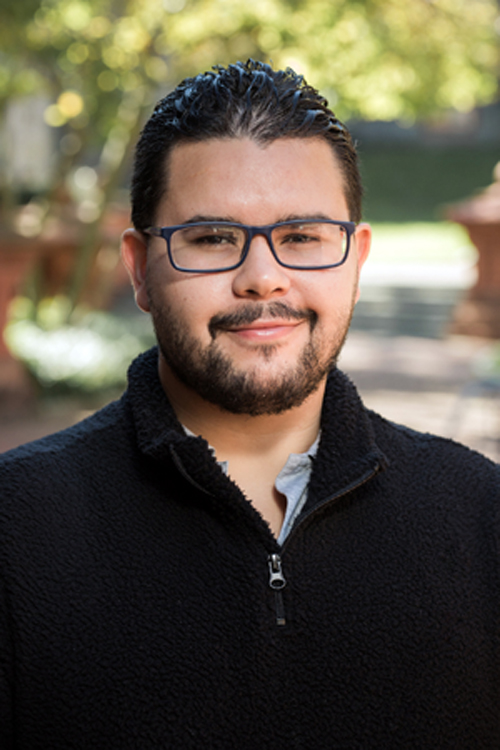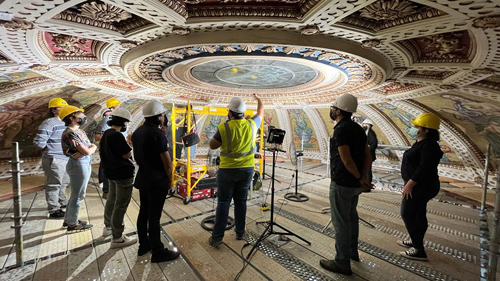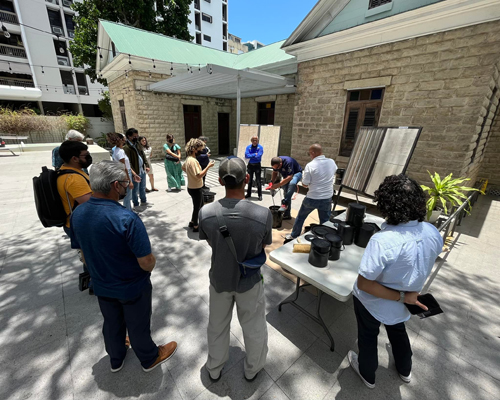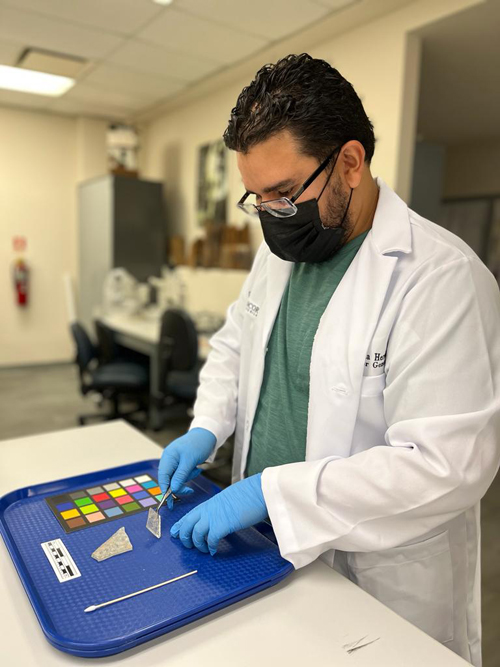Héctor J. Berdecía-Hernández, Director-General, Centro de Conservación y Restauración de Puerto Rico (CENCOR)
San Juan, Puerto Rico

Héctor Berdecía-Hernández is a conservator specializing in architecture and monuments. He currently serves as the founding Director-General of the Centro de Conservación y Restauración de Puerto Rico (CENCOR), where he is responsible for the institutional development of the Center, strategic planning, overseeing the operations, and the execution of special preservation and conservation projects, services, research, and community outreach initiatives. He also is an Adjunct Professor in preservation technology at the Graduate Program in Architectural Conservation and Rehabilitation at the Polytechnic University of Puerto Rico, and serves as a senior advisor to cultural institutions on technical matters related to the preservation of cultural heritage. Before being appointed as the first Director-General of the CENCOR, he worked on several heritage preservation and research projects in both public and private sectors in Washington, D.C., Philadelphia, and Puerto Rico.
Mr. Berdecía-Hernández holds an M.S. in Historic Preservation with a concentration in Architectural Materials Conservation from the University of Pennsylvania and a B.EnvD. in Environmental Design-Architecture with a double major in History of the Americas from the University of Puerto Rico, Rio Piedras. He also studied Conservation Science courses at Georgetown University and the Universitá degli Studi de Firenze.
As an architectural conservator and educator, his research focuses on the conservation of historic buildings and sites, traditional and modern building materials, their conservation, and issues related to public policy in heritage preservation and sustainable development.
What led you to your field?
I’ve been involved in the arts and culture field since childhood. In high school, I became interested in historic architecture. I enjoyed spending time at my school—a 1925 Spanish Revival building known as the “Palacete.” Since then, I decided to study architecture to become a preservation architect. My path changed slightly at college when I discovered the conservation world and decided to pursue my M.S. to become an architectural conservator. Conservators must be detailed oriented and often work with diverse materials and techniques in different settings (especially if you work with buildings and monuments), so it was a perfect fit for me.

How does what you do relate to historic preservation?
As Director-General of the Conservation Center, my work is related daily to the preservation of historic buildings and sites. The CENCOR is a nonprofit regional conservation center that provides educational and training opportunities; technical conservation services for historic buildings, sites, works of art, and collections; and promotes research in the field. Our first projects have been related to preserving important landmarks in Puerto Rico, such as the PR Capitol building. We help our people to learn and explore their culture, history, and heritage, to protect and preserve it.
Why do you think historic preservation matters?
Besides its significant benefits to tourism and economic development initiatives, historic preservation is key to understanding our society. Our cultural heritage links those who lived, dreamed, and built our communities with us. Preserving our cultural heritage allows us to understand our past and guides the path to our future.
What courses do you recommend for students interested in this field?
The preservation field is so vast. It depends on what area you want to work on (history, design, policy, planning, archaeology, hands-on/conservation). My advice is to identify what area(s) you would like to specialize in and take different courses. Standard courses on history and theory, research methodology, and policy are necessary. If you want to deep dive into the hands on/conservation world, chemistry, physics, architectural history, building technologies and materials conservation courses are needed.
Do you have a favorite preservation project? What about it made it special?

This is an interesting question because I have been involved in different challenging preservation projects that I liked. My field study at the Del Carmen Church in Cataño by architect Henry Klumb in 1962 has been one of my favorite projects, since I could dive deep into archival research and extensive laboratory analyses. A more recent project on the interior dome of the Puerto Rico Capitol Building has also been one of my favorite projects. We developed an extensive conditions assessment of the decorative plasterwork, Venetian mosaics, and historic stained glass.
Can you tell us what you are working on right now?
Besides the different preservation and conservation projects that the Center is currently leading, we are launching a Research Assistantship Program. This Program will allow students and emerging professionals to work on small technical research projects related to preserving art, collections, historic buildings, and sites in Puerto Rico. We are also collaborating with the Puerto Rico State Historic Preservation Office on a post-disaster inventory of historic buildings around the Islands.
Do you have advice for novice preservationists?
Be curious. Learn more skills. Read a lot, and create your own professional library. If you decide to pursue a graduate degree in preservation or a related field, you will only learn specific information. Books and additional readings are essential to our professional development. Also, don’t be afraid to ask for advice or help from seasoned professionals; networking is critical. Talk with many people, learn about their projects, and listen to them.
The ACHP’s mission is “preserving America’s heritage;” can you give us an example of how your community is preserving its heritage?
Preservation is a whole grassroots movement in Puerto Rico. Many community organizations around the Islands are currently leading efforts to preserve our heritage. From community blogs to walking tours, there is significant momentum for awareness of our cultural resources in our towns.
Tell us more about your organization; what tangible work have you done so far?

CENCOR has provided technical preservation and consultancy services since 2020. Our professional staff and technicians repair and stabilize historic buildings, provide educational programs, and help institutions plan for the future of their buildings and collections. The CENCOR has begun its work by focusing on the study and preservation of historic buildings and developing projects related to cultural resource management (CRM). Its first services, training projects, and educational opportunities impacted more than 1,000 people from 2021 to 2022, including emerging preservation professionals, government employees, and the public in Puerto Rico and abroad. As we grow as a full Conservation Center, we are currently developing specialized courses and training opportunities.
What was the impetus for starting this organization?
Puerto Rico’s extraordinary and extensive cultural heritage has become more vulnerable after the recent natural disasters and socio-economic crises affecting the Islands. The absence of a proper discipline in the preservation of cultural heritage, the lack of updated public policy tools, skilled personnel, specialized technical services, economic resources, and awareness of the importance of proper management make our cultural heritage even more vulnerable, thus leading to its disappearance. Thus, the Centro de Conservación y Restauración de Puerto Rico was born. From a myriad of professional concerns, but considering all the opportunities, we have to educate, protect and preserve our heritage and our history.
Why is it important to save and preserve artifacts and buildings in Puerto Rico?
Puerto Rico has a rich culture with more than 500 years of history. Our cultural heritage has been neglected for decades. It is necessary to continue working toward preserving our heritage and understanding our past regardless of the current technical and professional challenges. Fortunately, there is a momentum of community grassroots movements and young professionals seeking to help preserve our buildings and collections in the Islands. With the help of many committed professionals, I hope to continue moving forward with such a monumental task.
Read more Q&A stories about the Preservationists in Your Neighborhood!